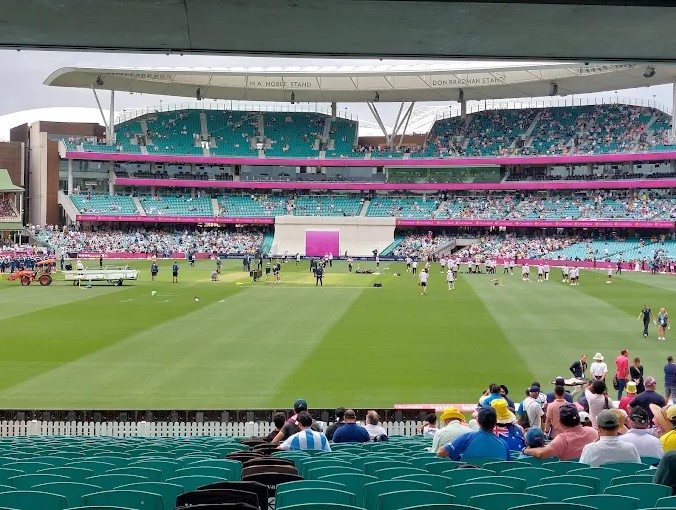The Sydney Cricket Ground (SCG) is one of Australia’s most historic and revered sporting venues. Located in Sydney, New South Wales, it has hosted countless cricket matches, AFL games, rugby league clashes, and even concerts. A vital aspect of any cricket ground is its boundary size, which directly influences gameplay, scoring patterns, and strategic decisions. This article explores the boundary dimensions of the SCG in meters, comparing them to other international stadiums and examining their impact on the game.
Table of Contents
Overview of the SCG
The Sydney Cricket Ground is home to the New South Wales Blues (cricket), the Sydney Sixers (BBL), and the Sydney Swans (AFL). It has undergone several renovations and upgrades, but its cricket boundary dimensions have remained within a relatively consistent range. While not the largest stadium by boundary size, it presents a unique challenge to bowlers and an opportunity for batsmen.
Key Details:
| Feature | Measurement |
|---|---|
| Established | 1848 |
| Capacity | ~48,000 |
| Ends | Paddington End, Randwick End |
| Surface | Grass (Bermuda + Rye mix) |
Sydney Cricket Ground Boundary Measurements
Unlike rectangular sports fields, cricket grounds often have uneven and varying boundary lengths depending on the angle and the natural shape of the ground. The SCG, like many stadiums, is slightly oval in shape.
Average Boundary Lengths at Sydney Cricket Ground
| Direction | Boundary Length (Meters) |
|---|---|
| Straight (to sightscreen) | 68–70 m |
| Square (to point/leg gully) | 65–67 m |
| Mid-wicket/Cover boundaries | 75–78 m |
| Behind square (fine leg/third man) | 62–65 m |
These values can vary slightly based on temporary boundary rope placements, especially during different formats such as T20s and ODIs.
Boundary Length Regulations
According to ICC regulations:
- The minimum boundary length from the center of the pitch must be 59.43 meters (65 yards).
- The maximum should not exceed 82.29 meters (90 yards), where conditions permit.
The SCG’s dimensions fall well within this range, ensuring it complies with global standards while maintaining its unique shape and size.
Sydney Cricket Ground Compared to Other Grounds
Let’s compare the SCG’s boundary sizes with those of other prominent international stadiums.
Comparison of Boundary Lengths
| Stadium | Straight (m) | Square (m) | Longest Boundary (m) |
|---|---|---|---|
| SCG (Australia) | 70 | 66 | 78 |
| MCG (Australia) | 83 | 86 | 90 |
| Eden Gardens (India) | 72 | 68 | 76 |
| Lord’s (England) | 75 | 65 | 82 |
| Newlands (South Africa) | 68 | 63 | 74 |
The Sydney Cricket Ground is slightly smaller than the MCG, especially in the square and straight boundaries, which makes it more favorable for aggressive batting, particularly in the shorter formats of the game.
Impact on Match Strategies
1. Batting Advantage
Shorter boundaries, especially square of the wicket, favor aggressive batsmen. Players such as David Warner and Glenn Maxwell have thrived at the SCG by utilizing the angles and the shorter square boundaries.
Example: During the BBL and international T20 matches, scores of 180+ are common due to the ease of clearing the shorter ropes.
2. Bowling Considerations
Spin bowlers often face challenges due to the relatively smaller dimensions. They must focus on accuracy and flight to avoid being punished. Fast bowlers tend to rely more on yorkers and slower balls to avoid hitting zones near short boundaries.
3. Field Placements
Captains often adjust fielders to protect the shorter square and fine leg boundaries. Deep point, deep square leg, and third man are commonly used boundary riders at the SCG.
SCG Boundary Adjustments in T20s vs. Tests
SCG Boundary Length by Format
| Format | Average Straight (m) | Average Square (m) |
|---|---|---|
| Test Matches | 70 | 66 |
| ODIs | 68 | 65 |
| T20Is/BBL | 66 | 63 |
These variations help balance the entertainment factor and competitive fairness across different formats.
Historical Highlights at the SCG
- Highest T20I Score at SCG: Australia – 221/5 vs. England
- Most Sixes in a T20I Match at SCG: 25 (combined between two teams)
- Notable Innings: Steve Smith’s 164 in an ODI vs. New Zealand showcased how players exploit boundary dimensions to dominate bowlers.
These statistics underline the ground’s batter-friendly nature, particularly due to boundary lengths that encourage aggressive strokeplay.
Technological Measurement of Boundaries
Modern cricket stadiums, including the SCG, use laser rangefinders and GPS mapping to ensure boundary ropes are measured accurately. This helps:
- Prevent disputes over boundary distances
- Ensure compliance with ICC regulations
- Maintain consistent gameplay standards across venues
Future Prospects
- Temporary boundary rope repositions for concerts or multi-sport use.
- Enhanced digital displays and laser markers to show exact boundary lengths on live broadcasts.
As the demand for high-octane cricket grows, especially in the T20 era, grounds like the SCG are continually innovating without losing their heritage charm.
The SCG’s boundary measurements—ranging from 62 to 78 meters—play a crucial role in how the game is played there. While not the largest ground, its balanced dimensions cater to exciting cricket across all formats. Batsmen find opportunities for boundaries, while bowlers must adjust strategies based on angles and size.
As cricket continues to evolve, the SCG will remain a centerpiece of Australian and world cricket—not just because of its legacy, but because of its dynamic boundary configuration that keeps both players and fans engaged.


